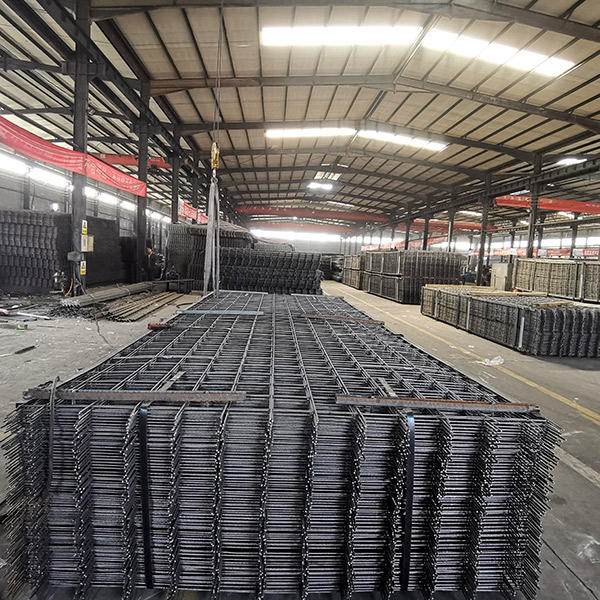ធ្នូ . 16, 2024 01:29 Back to list
steel welded wire mesh
The Versatility and Applications of Steel Welded Wire Mesh
Steel welded wire mesh is an indispensable material in construction, agriculture, and various industrial applications. Its combination of strength, durability, and flexibility makes it a preferred choice across many sectors. This article delves into the properties, benefits, and diverse applications of steel welded wire mesh, highlighting its importance in modern infrastructure and its role in enhancing safety and efficiency.
What is Steel Welded Wire Mesh?
Steel welded wire mesh is composed of a series of longitudinal and transverse wires that are welded together at their intersections. This unique construction technique lends the mesh strength and structural integrity, allowing it to withstand significant loads and pressures. Typically made from carbon steel, this mesh can be galvanized or coated with other materials to enhance corrosion resistance, making it suitable for both indoor and outdoor usage.
Key Properties
1. Strength and Durability Steel welded wire mesh is renowned for its high tensile strength. This makes it an ideal choice for applications where ruggedness is essential. The welding process, which joins the wires at each intersection, ensures that the mesh remains intact under stress, minimizing the risk of structural failure.
2. Versatility Available in various wire diameters and mesh sizes, steel welded wire mesh can be tailored to meet the requirements of specific projects. Whether it's for concrete reinforcement or protective barriers, the flexibility in design makes it suitable for a wide range of uses.
3. Cost-Effectiveness Compared to traditional reinforcing methods, steel welded wire mesh offers a more economical solution. Its use can help reduce labor costs and time on construction sites, making it a practical choice for builders and contractors.
4. Ease of Installation The lightweight nature of welded wire mesh facilitates easy handling and installation. Construction teams can quickly lay out and secure the mesh in concrete, enhancing productivity without compromising on quality.
steel welded wire mesh

Applications of Steel Welded Wire Mesh
1. Construction and Reinforcement One of the primary uses of steel welded wire mesh is in the construction industry for reinforcing concrete structures such as floors, slabs, walls, and roofs. By providing tensile support, it helps prevent cracking and structural weak points, ensuring a longer lifespan for buildings.
2. Fencing and Barriers Welded wire mesh is widely used in the manufacturing of fences for security and enclosure purposes. The robust construction provides a formidable barrier against intruders and can be utilized in residential, commercial, and industrial settings. It is also employed to create livestock pens, preventing animals from escaping while allowing for visibility and airflow.
3. Industrial Applications In industrial settings, steel welded wire mesh is utilized in the fabrication of storage racks, shelving units, and protective guards for machinery. Its strength accurately supports heavy loads and helps safeguard employees from potential hazards.
4. Agricultural Uses Farmers often use welded wire mesh for fencing off crops, creating trellises for climbing plants, and constructing animal enclosures. Its resilience against weather conditions makes it suitable for outdoor farm environments.
5. Architectural Elements Modern architectural designs frequently incorporate steel welded wire mesh as a decorative element. It can be used in facades, partition walls, and even ceiling designs, providing both aesthetic appeal and structural benefits.
Conclusion
Steel welded wire mesh stands out as a versatile and essential material across numerous fields. Its impressive strength, easy installation, and cost-effectiveness make it a preferred choice among builders, architects, and farmers alike. As technology advances and new applications emerge, the demand for steel welded wire mesh will likely continue to grow, underscoring its significant role in enhancing the safety and durability of structures and facilities. From reinforcing buildings to creating secure enclosures, this material demonstrates adaptability and resilience, proving to be a valuable asset in the world of construction and beyond.
-
Durable Welded Wire Mesh for Industry Factory - High Quality
NewsAug.26,2025
-
Leading Galvanized Steel Fence Factory | Durable & Secure Fencing
NewsAug.24,2025
-
Welded Wire Mesh for Industry Factory - Durable & Custom Solutions
NewsAug.23,2025
-
Your Galvanized Steel Fence Factory - Strong, Durable Solutions
NewsAug.22,2025
-
Welded Wire Mesh for Industry: Factory Direct & Custom Solutions
NewsAug.21,2025
-
Welded Wire Mesh for Industry | Factory Direct & Durable Solutions
NewsAug.19,2025

